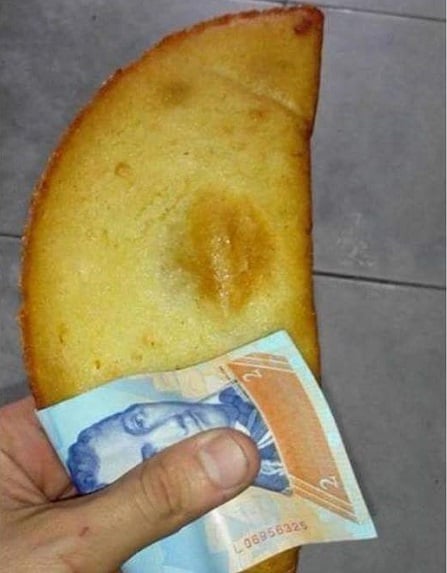(Mike Maharrey, Money Metals News Service) Is a dollar worthless? No. Well, not quite. Dollars make good wallpaper.
If you visit Charleston, S.C., stop by The Griffon – English Style Pub. You’ll find the inside wallpapered with dollar bills.
There are dollar bills on the walls. There are dollar bills on the ceiling. There are dollar bills plastered on columns. No matter where you are in the establishment, you’ll find easy money within arms reach.
And yet nobody takes it.
Why would you? What are you going to do with a dollar?
Not much.
You’d have to grab about 10 bills off the wall just to buy a drink.
So, why not use American currency for wallpaper? It’s even a nice shade of green!
Now, if the Griffon was papered with $100 bills, the owners might have a security problem. And imagine if the bar was covered in gold coins.
But dollar bills?
No worries.
It’s just not worth the trouble to pilfer.
This wasn’t always the case. A dollar in 1970 was worth about $8.44 according to the Bureau of Labor Statistics inflation calculator based on the CPI. You could have grabbed a bill off the wall and bought a drink back then.
Keep in mind that the CPI doesn’t tell the entire story of inflation. The government revised the CPI formula in the 1990s so that it understated the actual rise in prices. Based on the formula used in the 1970s, CPI is closer to double the official numbers.
The sad reality is our money has devalued to the point that a dollar bill isn’t much different than a penny. It’s not worth bending over to pick it up.
Speaking of pennies, have you heard about the penny problem? President Trump recently ordered the U.S. Mint to stop producing them. It’s too expensive. It costs about 3.69 cents to mint and distribute a penny.
And by the way, we also have a nickel problem. According to the most recent annual report produced by the U.S. Mint, it costs 13.8 cents to produce and distribute one nickel.
The phasing out of the penny and the fact that people are willing to use dollar bills as wallpaper underscore the devaluation of your money and the erosion of your purchasing power. It’s slow, but it’s inexorable.
And it’s not a good look.
As Venezuela was facing one of its spates of hyperinflation back in 2015, a photo of a man using a 2 bolivar note as a napkin went viral. The picture encapsulated the economic distress endured by the Venezuelan people.

Business Insider reported that, based on the official exchange rate, the makeshift napkin was worth about 32 cents. But in reality, the man didn’t waste nearly that much.
“On the black market, the reality is completely different. You can get 676.88 bolivars to the dollar, according to dolartoday.com. That means holding food with a 2 bolivar note costs the holder less than a third of one U.S. cent.”
Here’s something that should give Americans pause.
Is using currency as a napkin any different than using it as wallpaper?
Is the U.S. Venezuela?
Its monetary policy certainly isn’t much different – print money so the government can borrow and spend.
The difference is the U.S. enjoys the advantage of issuing the world reserve currency. That means the world needs a lot of dollars. It doesn’t need any bolivars. This demand for dollars supports the U.S. government’s borrowing, spending, and money creation. If the dollar wasn’t the reserve currency, we would likely be facing hyperinflation just like Venezuelans did. (Or perhaps we would have a smaller less intrusive government.)
That raises a question: What happens if the dollar loses its reserve status?
We may find out because it’s happening, slowly but surely. With de-dollarization, the dollar’s reserve status is losing ground to gold and other currencies.
At the rate we’re going, it won’t be long before people are wallpapering bars with $100 bills and using dollars and napkins.
Mike Maharrey is a journalist and market analyst for Money Metals with over a decade of experience in precious metals. He holds a BS in accounting from the University of Kentucky and a BA in journalism from the University of South Florida.

